TOYS, BIRD HOUSES & PERCHES
It is important to keep your birds psychologically healthy. Birds are busy and active in the wild. It is important to keep them occupied by providing fun toys for them to chew, shred and forage.
General Guidelines for Toys
1. Toys must be changed once they are broken/torn or worn out more the 50% and if there are sharp splinters that may cause harm to the birds.
2. To check during daily cleaning.
3. New House to be replaced when destroyed. Note: Sun Conures likes to rip their houses and they do not mind that their houses are full of openings. Best to leave it otherwise you will need to replace them once every week!
4. Toys are important as it keeps them occupied and not bored which can lead to feather plucking.
5. Other affordable options for toys are suspending fallen tree branches with husk ropes and or just tie husk ropes around their perches. Birds like to play and nibble on the strands of these husk ropes.
6. It is important to arrange toys in a way that do not block the flight path of the birds. There should also be ample space for them to stretch their wings.
7. For small aviaries, it is important to have lots of perches so that they can rest from flying short distances.
8. Toys should be hung on the sides and in a way that it does not obstruct the bird's flight path.
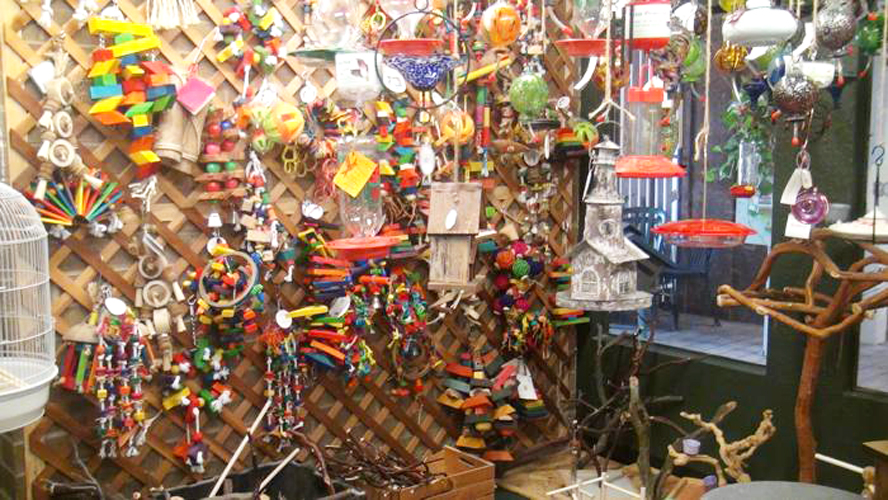
Tangled in Toys
This is a risk mainly with hanging toys such as rope toys or hanging
chain toys, but it can also happen with any toy that has a space large
enough that your bird can get its beak, head or foot stuck. If a bird
gets stuck it can seriously injure itself by thrashing around and can
die from such injuries as well as strangulation. Some common culprits:
Cotton rope toys: these are best used only under supervision because
sometime the threads unravel and leave a risk of strangulation or
entanglement. Cotton rope is sometimes shredded and ingested. Sisal
rope is considered a safer alternative.
Hanging Chains: metal chains with small gaps in the links are a
risk for snaring toe nails and sometimes beaks. Also watch for links
(metal or plastic) that are large enough to trap your bird's feet or
head.
Clips and Rings: lanyard type clips (the kind that are kind of
tear drop shaped with the sides of clip overlapping and open by
squeezing the sides of the clip and close again when the pressure is
released) can trap beaks and toe nails. Split rings (key chain rings) are
also notorious for trapping beaks on parrots. Parrots are at a much
greater risk from these than other birds due to their beak strength and
dexterity. C-links or "Quick Links" are a much safer choice, as long as
you avoid those containing zinc.
Bells: spherical bells with slits for openings (and a loose
pellet of metal inside that makes a jingling sound) can trap your bird's
beak.
Loose Threads: fabric items like huts and cage covers can have
threads come loose and entangle toes and other body parts. Any fabric
items must be inspected regularly.
Holes: any toy with holes or gaps can pose a problem if the
hole is just the right size to trap a toe, beak, or head. Be sure to
watch your bird closely with a new toy at first and be wary of potential
problems such as this.
Swallowing Toys
Again, this is likely to be a problem with parrots as they are
usually more inclined to chew up their toys than other types of birds.
Bits of toys that are chewed off and accidentally swallowed can cause
problems by irritating the digestive tract, causing a blockage in the
digestive system, or even perforating the crop or intestines if they
have sharp edges. Various types of toys can cause problems:
Wood: birds love to chew on wood and it is good exercise for their
beaks, but watch to make sure they are not swallowing sharp splinters.
Plastic: stick with tough toys like acrylic, but you still need
to watch that your bird is not destroying the toy and swallowing the
pieces. For most parrots, softer or flimsy plastic toys will be quickly
shredded.
Bells: make sure the clapper of the bell (the hanging bit that
hits the side of the bell to make the bell's sound) is firmly attached
as these can be quickly removed and swallowed by a bird (and as
mentioned previously, beware of clappers that contain lead). Similarly,
spherical shaped bells with slits can be peeled open and the metal piece
from inside can be swallowed.
Fabric and fluff: play huts and tents are becoming more popular, but there have been reports of birds getting caught in loose threads or ingesting the fluffy material from these. Again, if you use these items watch your bird carefully to make sure he/she is not eating it, and inspect it regularly for loose threads.
Mirror - Add a little extra entertainment in your bird's cage with a mirror. A mirror is a great way to offer your caged bird an activity to keep him entertained and visually stimulated even when you're away from home.
Bird Toys to Consider
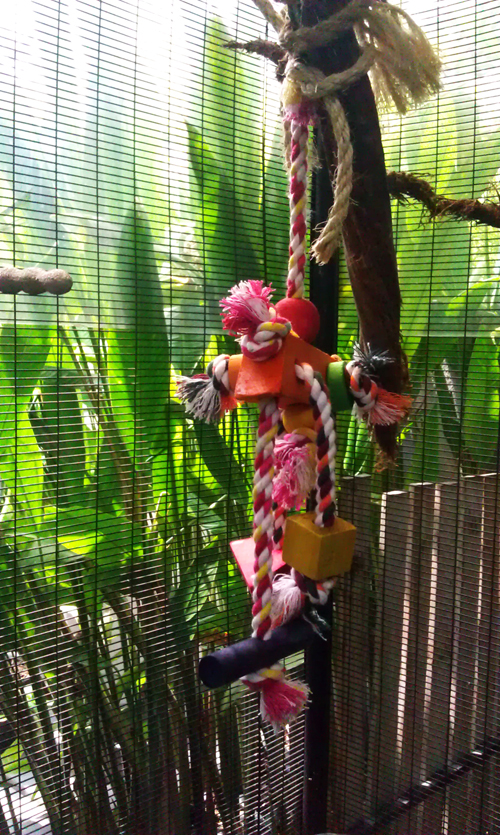
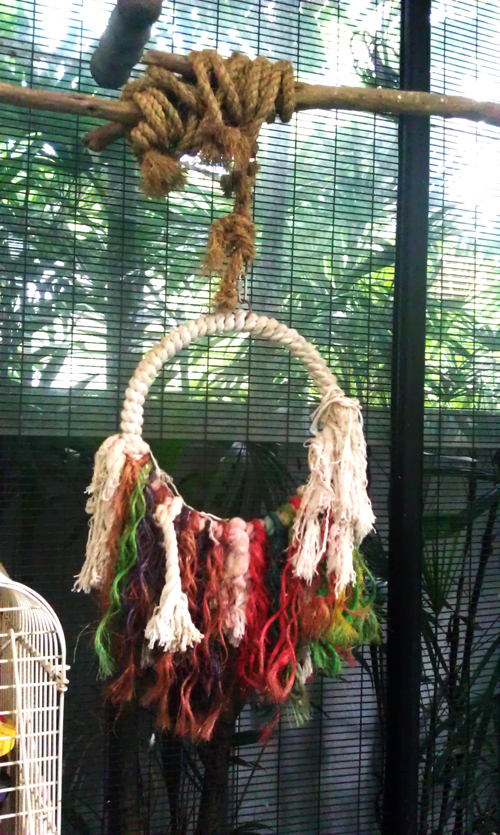
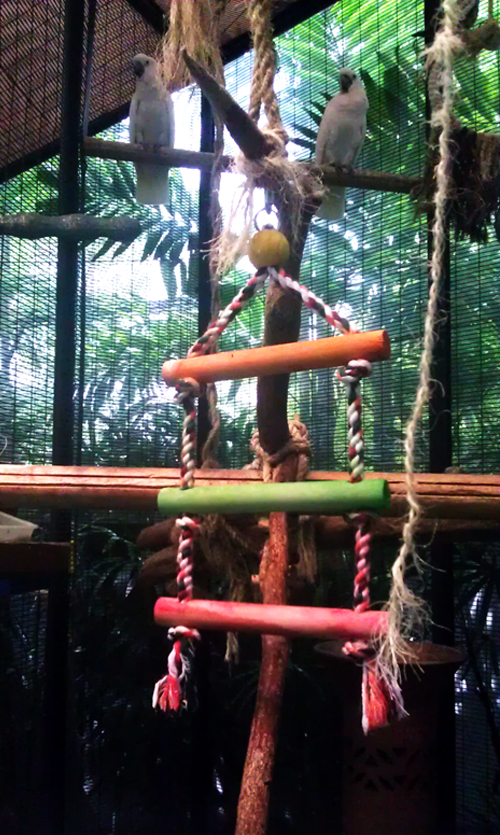
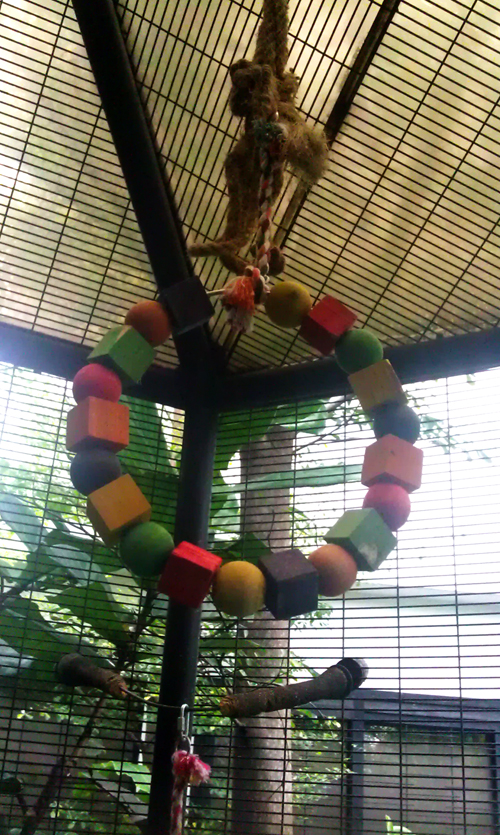
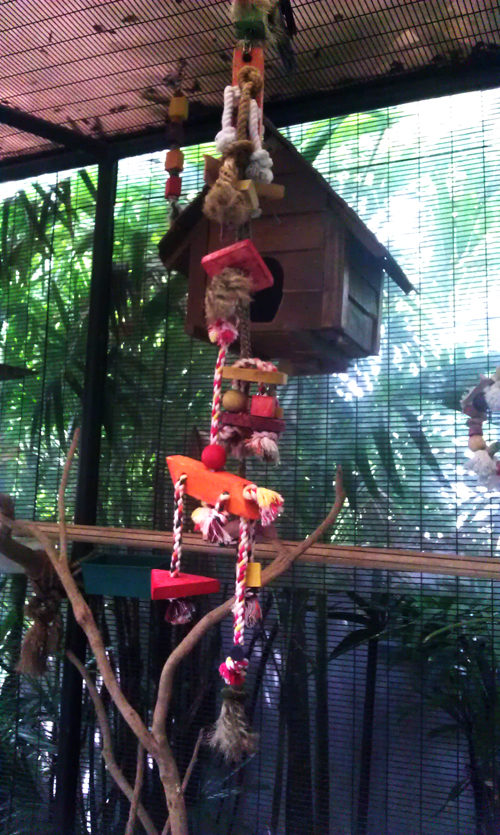
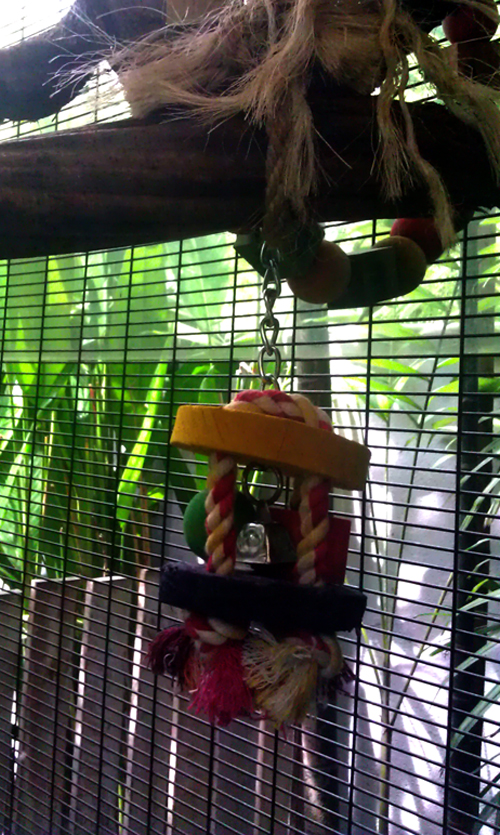
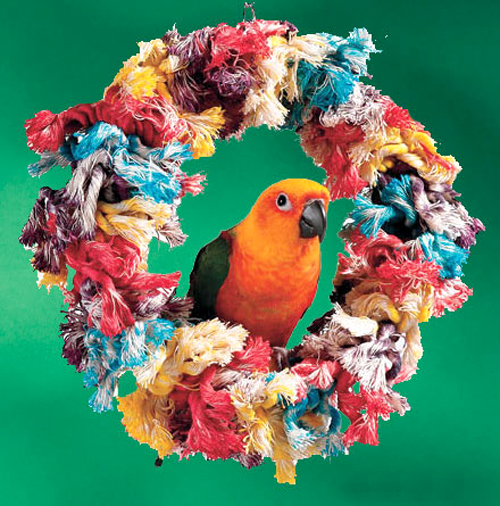
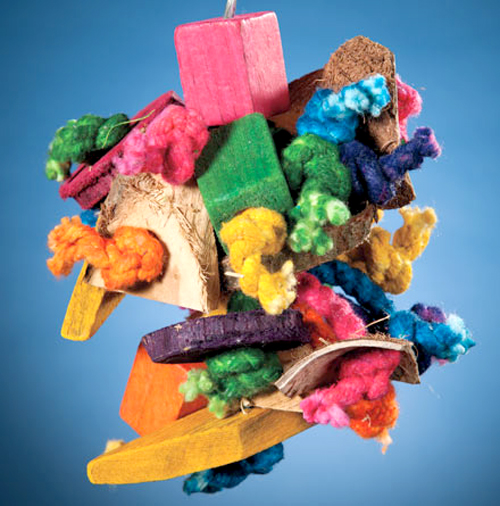
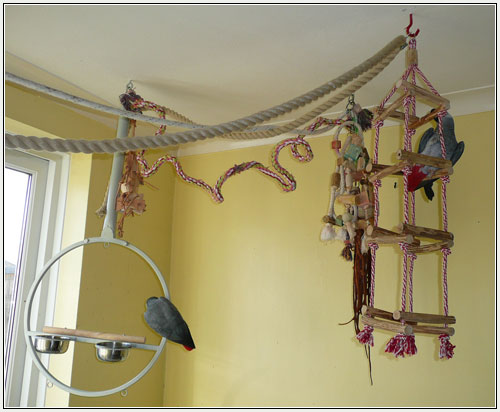
Bird Houses
Having bird houses in the aviary provides a sense of security for the birds. Some birds would even build a nest in the bird house to hatch eggs.
Bird Houses to Consider
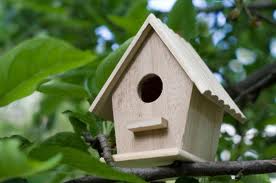
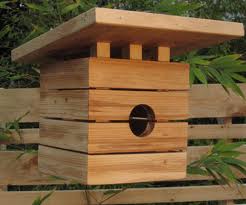
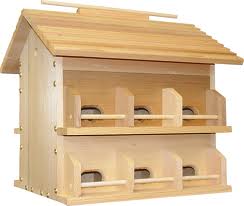
Perches
In the wild, birds will perch on many different types of tree branches which helps them strengthen their feet and leg muscles. Our domesticated birds do not have the same opportunity to do that in their homes(cages). By using a variety of perches you can help prevent and alleviate cage stress, boredom and related feather picking as well as strengthening leg and feet muscles.
Rope Perches
These bird perches are soft and bendable and can be made into fun shapes for your bird to walk around on. What makes these perches really good for your bird is the softness. When a bird is forced to perch on a hard surface constantly they can get an irritation on the bottom of their feet so having a nice soft perch available gives your bird a chance to have something soft on the bottom of their feet.
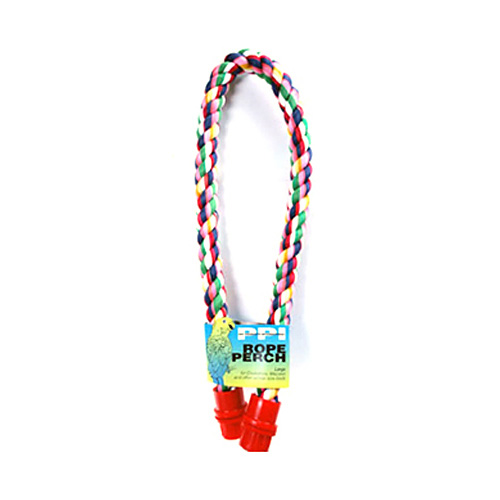
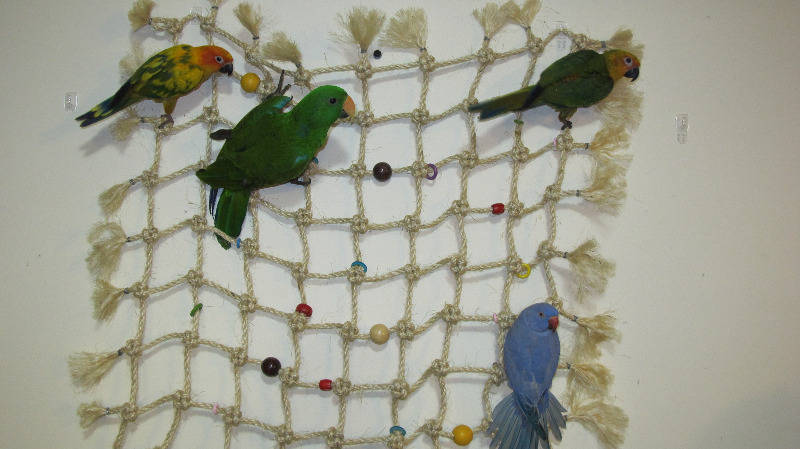
Natural Hardwood-Cholla Perches
These perches best mimic your parrots natural environment. This gives a domestic bird a chance to experience life the way they would have in the wild. It is important to make sure you vary the size, shape and diameter of these perches. What is great about these hardwood perches is that they are natural so they will come with texture variations which will really help your bird build up its feet and leg muscles.
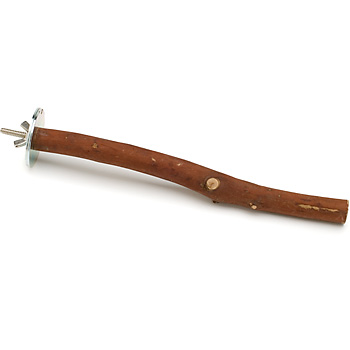
Nail Trimming-Cement Perches
These perches are great for your bird. They help to keep your bird's nails trim so you do not have to take them as often for that dreaded visit to the vet or bird shop. Making sure that your bird's nails are not too long is extremely important. Long nails can get caught in toys and other things and your bird can get hurt trying to get their nail out. Cement bird perches also provide a completely different type of texture for your bird to perch on.
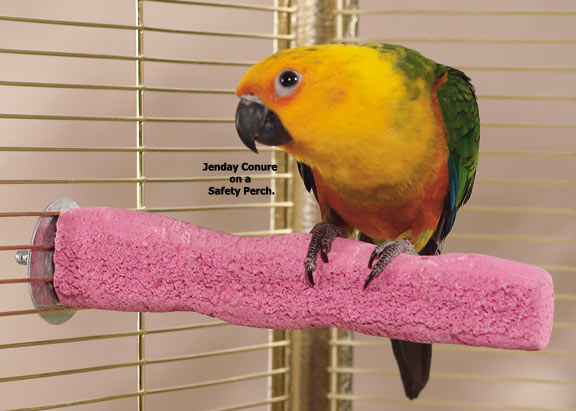
Edible Perches
This is a relatively new type of bird perch. This type of bird perch allows your bird to chew and eat this type of perch. Made of
Calcium and Bee Pollen your bird can obtain valuable nutrients while
sitting and nibbling away. I have seen this perch hung from the top of
the cage more like a toy or it can be hung like a regular perch.
The most important thing to remember is to give your feathered friend lots of options in his home. Also, keep in mind that most birds will climb to the highest perch in their cage to sleep so you should vary that high perch between all the different textures available. This way your bird is not just sleeping on the same perch type night after night.
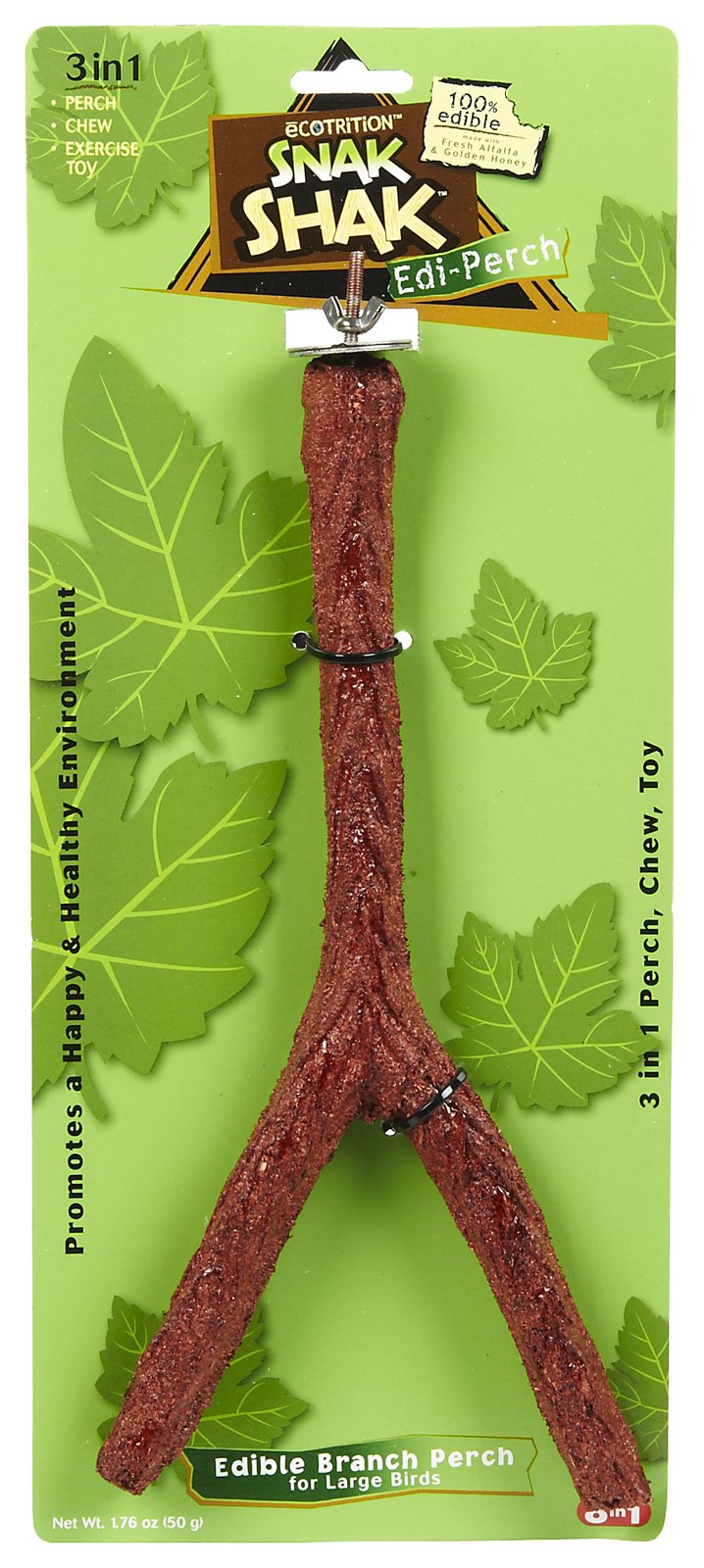
a) Lava Chew
| * | Natural lava rock for small to medium pet birds removes food and conditions beak |
| * | Encourages natural chewing and beak cleaning behaviour in pet birds |
| * | Stainless steel washers resist corrosion for secure mounting on bird cage |
http://www.drsfostersmith.

| * | Beak-conditioning mineral block with tempting bird treats inside |
| * | Provides a great source of calcium that keeps cage birds entertained |
| * | Reward caged birds with chewing activity PLUS seed, fruit or vegetables |
http://www.parrot-and-

Toys, Bird Houses and Perches Suppliers:
We suggest Pets Wonderland - Reptiles & Exotic Animals section. Below are the addresses of these two favourite places.Pets Wonderland
Tel: 603 2284 3388
Address:
4th Floor
Lingkaran Syed Putra
Mid Valley City
59200 Kuala Lumpur
Malaysia
Opening Hours: Mon -Sun: 10:00am - 10:00pm